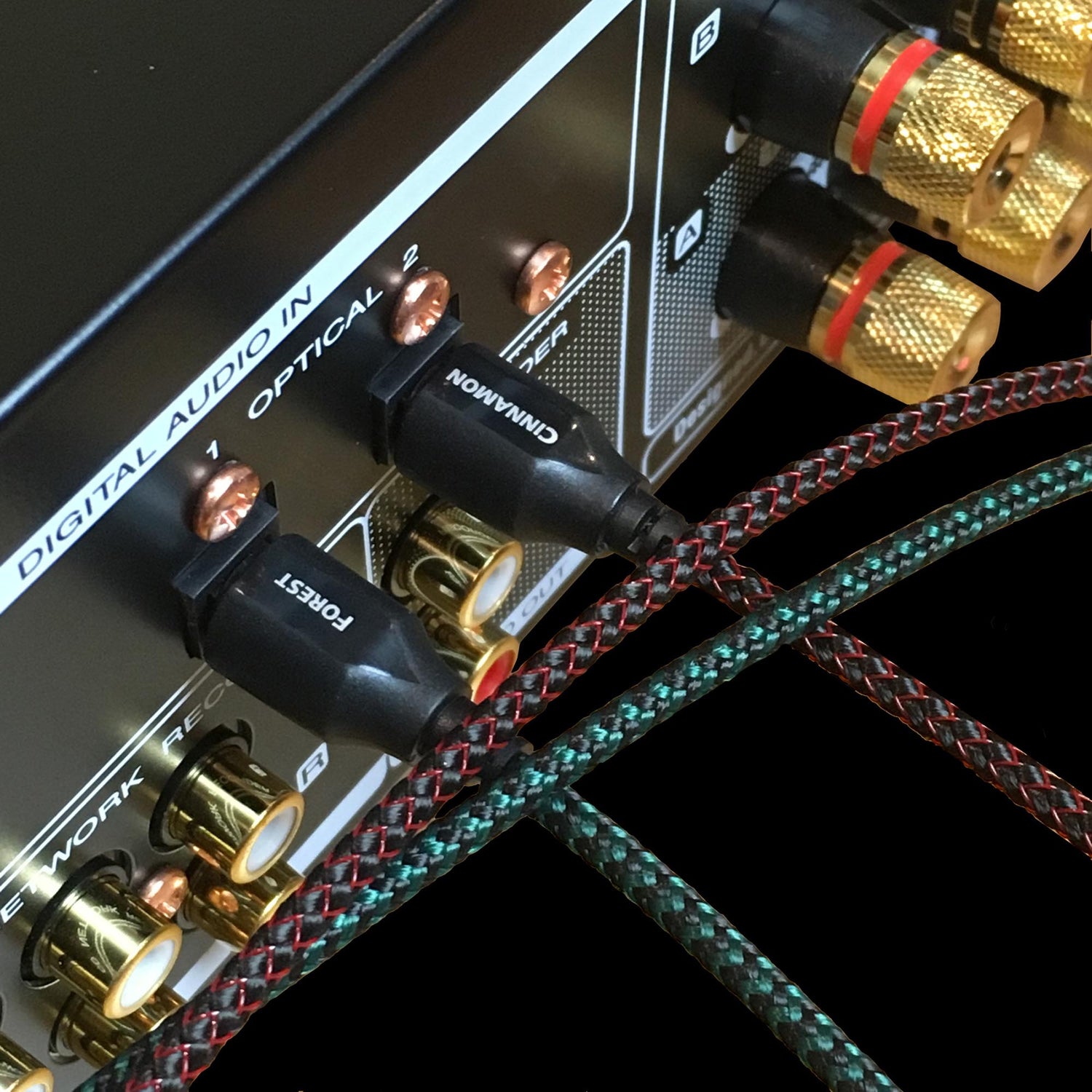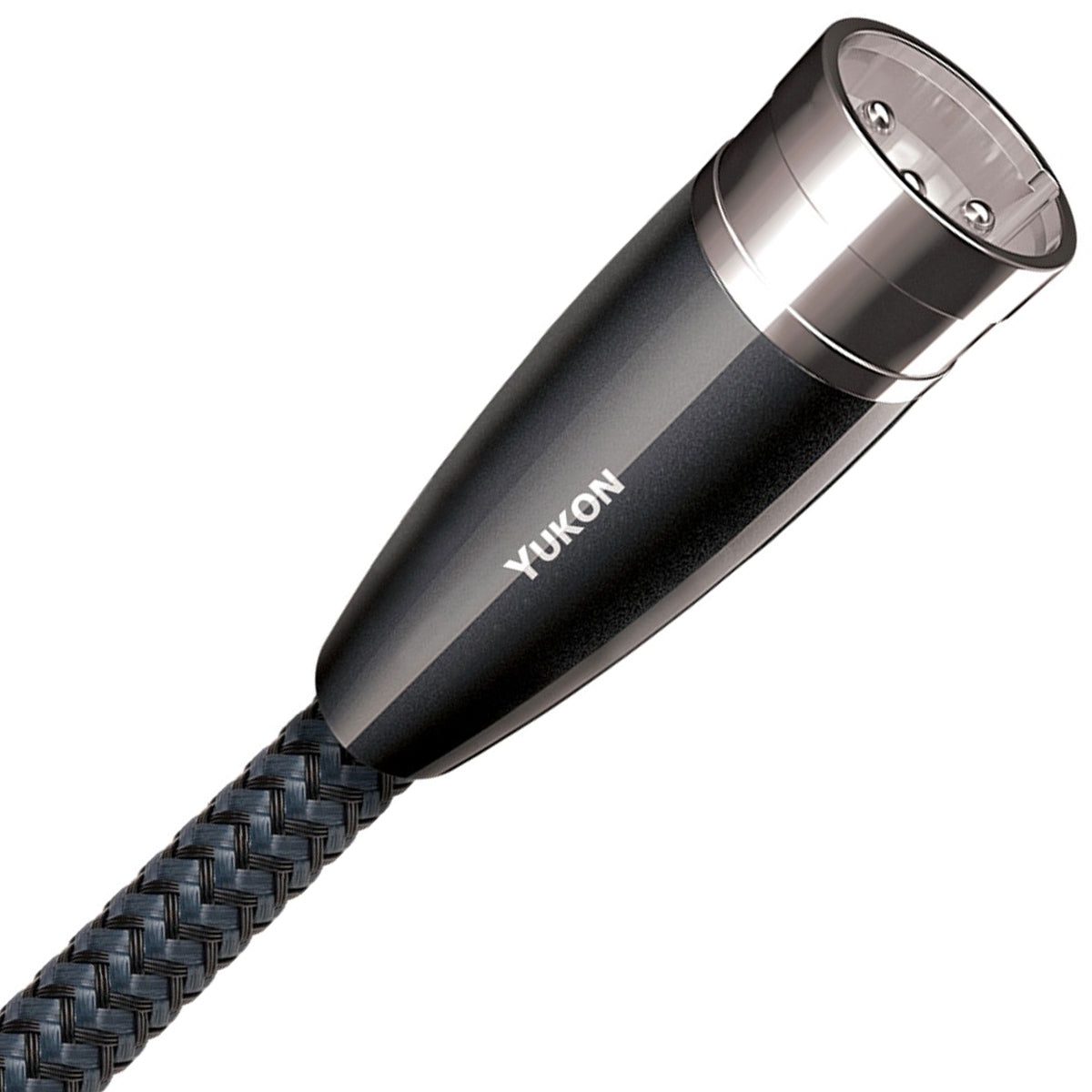
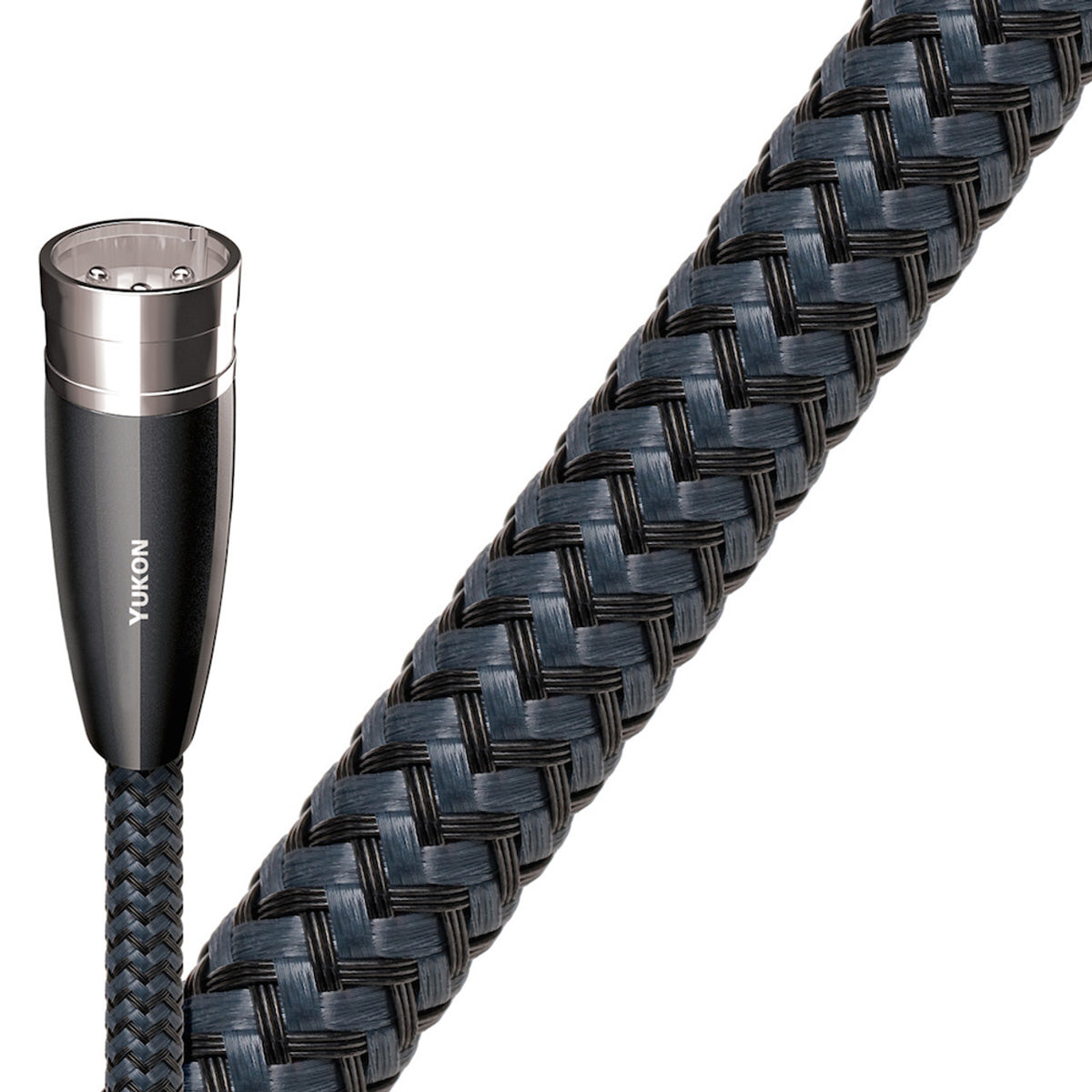
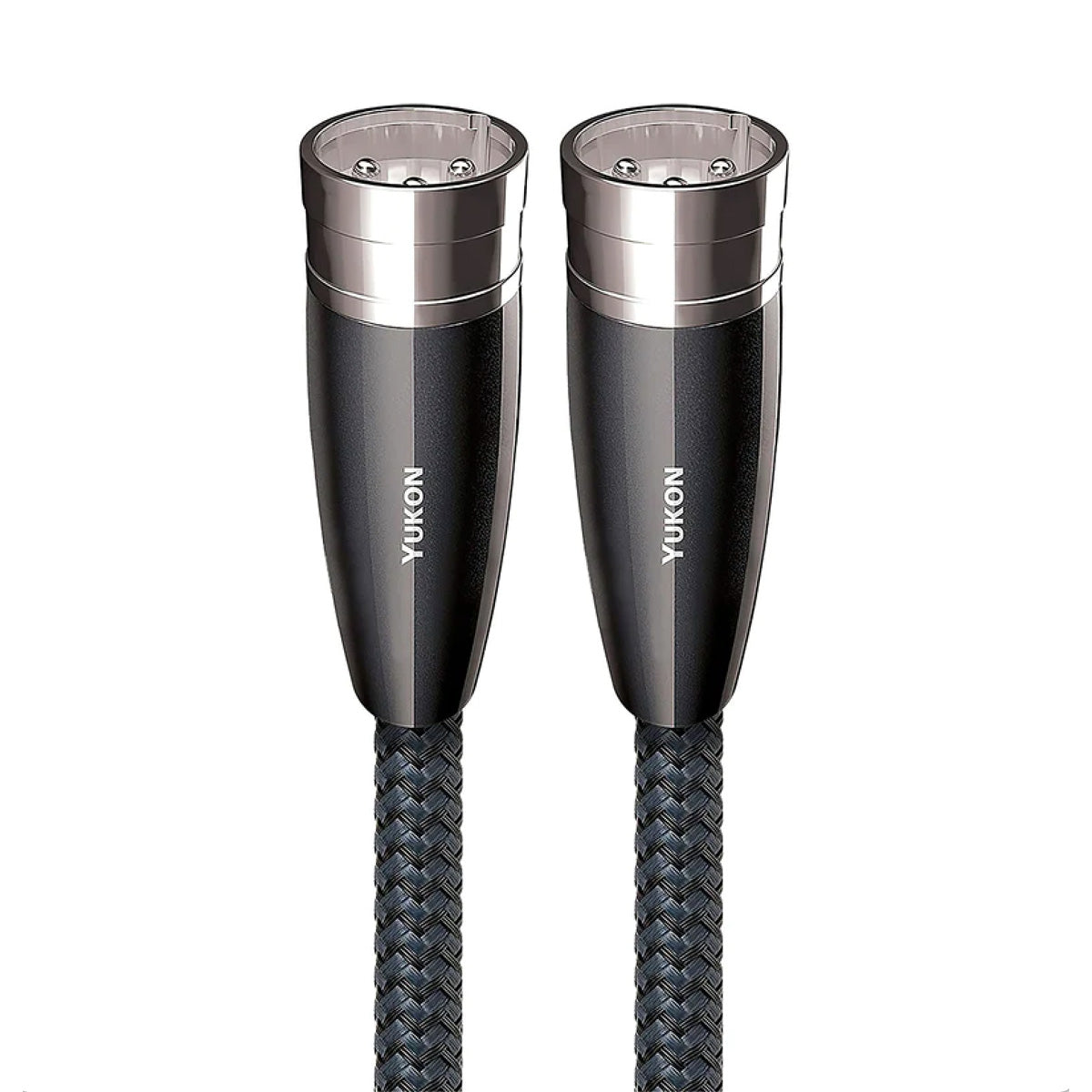
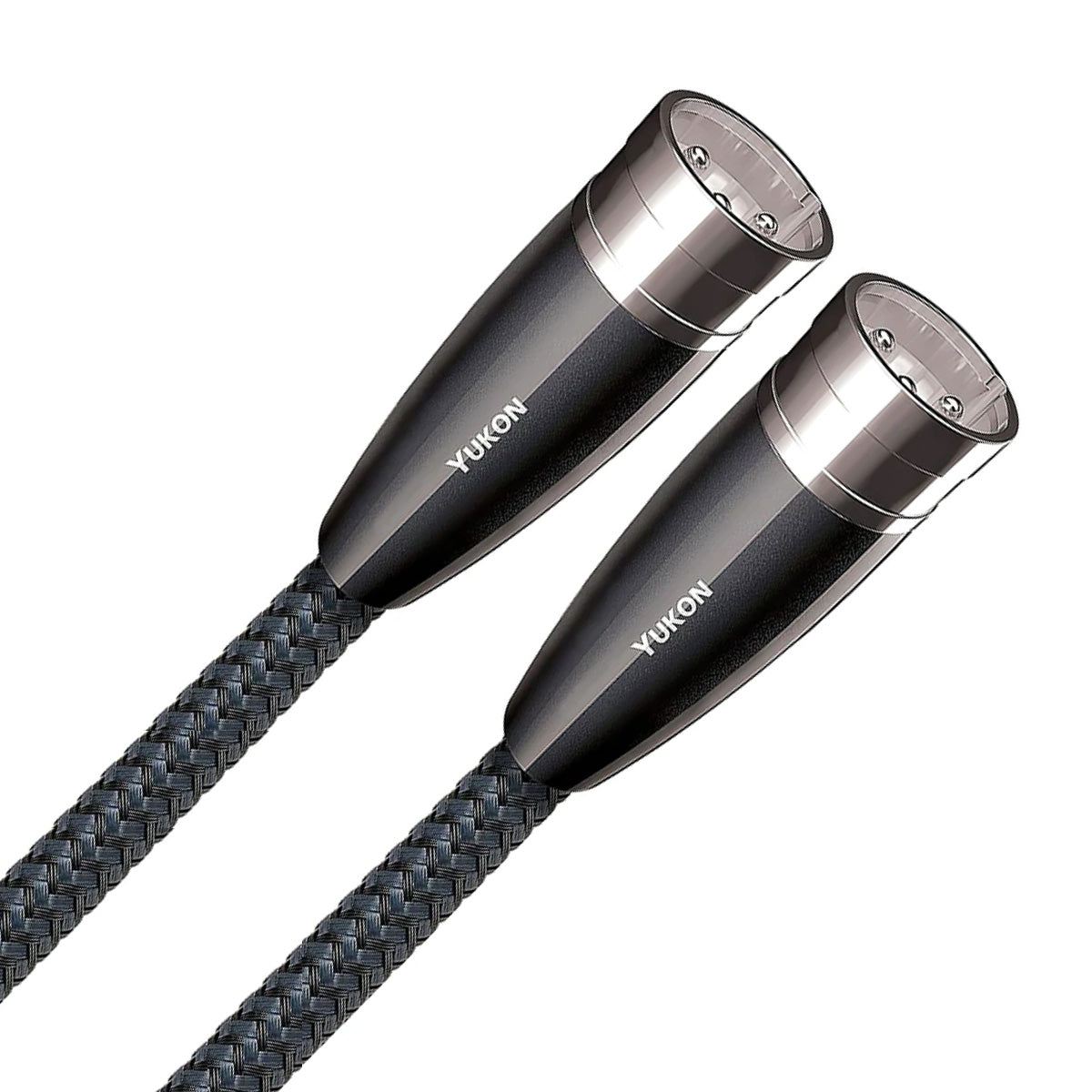
About The AudioQuest Yukon XLR Cable
If you are moving towards more high-end audio equipment, then you will discover that many (not all) use balanced XLR type connectors. AudioQuest deliver products that achieve the highest levels of performance and reliability. Their XLR to XLR terminated cables are no exception. If you have audio gear that allows for XLR or balanced line connection, then you can't go wrong with high-quality brands like AudioQuest.
Balanced Cables use two dedicated conductors to provide forward and return paths for signal. The ground connection in balanced configurations is accomplished by means of a third, dedicated, ground conductor. Balanced XLR connectors use large diameter signal pins. They are considered superior by High-End manufacturers and audiophiles to the very common RCA in that they sound better and provide a positive locking action. The Yukon series will suit the most fastidious customer as it embodies many of the technical advancements from some of the more expensive AudioQuest cables. This includes the carbon-based 3-Layer NDS system.
Solid Perfect-Surface Copper (PSC) Conductors: Perfect-Surface Copper has an astonishingly smooth and pure surface. Proprietary metal-processing technology protects the wire's surface at every stage of drawing and fabrication. When high-purity low-oxide copper is kept as soft, pure and smooth as possible, it becomes a wonderfully low-distortion conductor. For over 30 years AudioQuest has pioneered the use of superior metals and PSC clearly outperforms previous AQ metals that cost over ten times as much. Electrical and magnetic interaction between strands in a conventional cable is the greatest source of distortion, often causing a somewhat dirty, harsh sound. Solid conductors are fundamental toward achieving Yukon's clean sound.
Carbon-Based 3-Layer Noise-Dissipation System (NDS): Preventing captured RF Interference from modulating the equipment's ground reference requires AQ's Noise-Dissipation System. Metal and Carbon-Loaded synthetics prevent most RFI from reaching the equipment's ground plane.
Solid Long-Grain Copper (LGC) Conductors: Solid conductors eliminate strand-interaction distortion. Solid Long-Grain Copper allows a smoother and clearer sound than cables using regular OFHC (Oxygen-Free High-Conductivity) copper. OFHC is a general metal industry specification regarding "loss" without any concern for distortion. LGC has fewer oxides within the conducting material, less impurities, less grain boundaries, and definitively better performance.
Polyethylene Air-Tube Insulation: Any solid material adjacent to a conductor is actually part of an imperfect circuit. Wire insulation and circuit board materials all absorb energy. Some of this energy is stored and then released as distortion. AudioQuest, however, uses Polyethylene Air-Tube Insulation on both conductors, for increased geometry stabilisation and improved clarity. Because air absorbs next to no energy and Polyethylene is low-loss and has a benign distortion profile, Polyethylene Air-Tube Insulation, with its high air content, causes much less of the out-of-focus effect common to other materials.
Triple-Balanced Geometry: The three conductors in "Triple-Balanced" Yukon cables ensure that the XLR plugs' positive and negative signals have equally low-distortion conducting paths. This 100% coverage shield is never used as an inferior conductor.
Cold-Welded Hanging-Silver Directly Over Pure Purple Copper Plugs: Yukon's XLR plugs feature new connectors and new pins. The connectors are fastened by cold welding — a solder-less process that uses high pressure and silver paste to minimise signal loss. This plug design allows for a connection devoid of solder, which is a common source of distortion. Because the ground shells are stamped instead of machined, the metal can be chosen for low distortion instead of machinability. By contrast, solder tends to impede the signal, and the heating of the copper conductor during soldering can negatively affect its performance. Purple Copper offers a cleaner, clearer sound than the nickel-plated or OFHC metals commonly found in competing manufacturers' plugs.
Directional: Arrows on the XLR connectors indicate the preferred signal path from the source component to the input.
The History Lesson: Personally we like how Bill and his team come up with names for their products, so this is the story behind the "Yukon" series: Meaning "Big River" in Athabaskan, the Yukon River starts with the Llewellyn Glacier as its source in British Columbia, and empties into Alaska's Bering Sea. It may have been the first immigration route for North America's first indigenous humans, and was certainly the principle means of travel during the 1896-1903 Klondike Gold Rush. Paddle-wheel riverboats continued as the dominant form of transportation along the river until the 1950s when the Klondike Highway was completed. King Salmon from the Yukon River remain an elusive, but prized delicacy.
Main Features & Specifications
- Design: A pair of audio interconnects with XLR terminals on both ends
- Conductors: Three solid Long-Grain Copper conductors per cable for clean, low-distortion sound
- Insulation: Polyethylene Air-Tube Insulation to minimize information smearing
- NSS: Carbon-based 3-layer Noise-Dissipation System prevents RF interference from reaching the equipment's ground plane
- Geometry: 3-conductor Triple-Balanced Geometry — the separate ground conductor ensures that positive and negative signals have equally low-distortion conducting paths
- Terminations: Cold-welded Silver Directly Over Pure Purple Copper Terminations
- Jacket: Black braid
- Available Lengths: 500mm; 1 Metre; 1.5 Metre; 2 Metre & 3 Metre
- Manufacturer's Australian Warranty: 5 years - Does not cover misuse or abuse
Note: Features & Specifications Subject To Change Without Notice. E&OE.
Product Reviews
Product Questions
